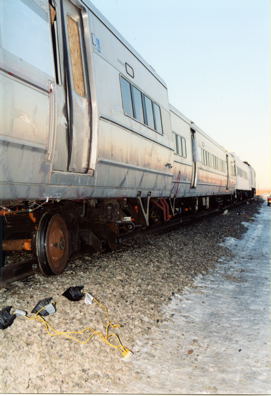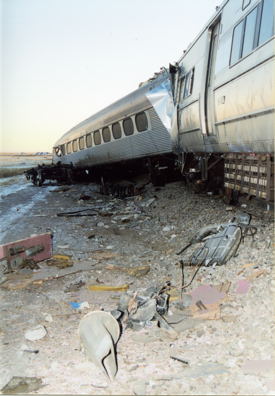Railroad Crash Energy Management Testing
 |
The purpose of these tests was to develop strategies for improving passenger protection in train accidents. The tests were designed to evaluate and improve Crash Energy Management (CEM) in conjunction with strategies to improve workstation tables and to optimize commuter seats. Over a number of years, tests were conducted around two collision scenarios – an inline train to train collision and a grade crossing collision. The principal objective of these tests was to test current train crashworthiness. Then, develop and improve train crashworthiness. Finally, the performance of conventional and improved crashworthiness equipment under similar impact conditions was compared. GMH Engineering instrumented and gathered data on all of the tests. |
 |
||
Aftermath of a Crash Energy Management (CEM) test using distributed data acquisition with GMH Engineering's DataBRICK to collect data along the entire length of the train. |
CLICK HERE TO VIEW A VIDEO COMPAIRING CONVENTIONAL AND IMPROVED CRASHWORTHINESS IN TRAINS |
GMH Engineering's DataBRICK allowed for distributed data acquisition. No sensor cable was longer than 24 meters (75 feet) in a train almost 200 meters (600 feet) long. |
Collecting distributed data along almost 200 meters (600 feet) of train without lengthy runs of cable which could be damaged or disengaged during a crash test could be a problem, but not with GMH Engineering's DataBRICK. The DataBRICK'S size also makes it a great choice when collecting data from multiple vehicles used in a single crash test.